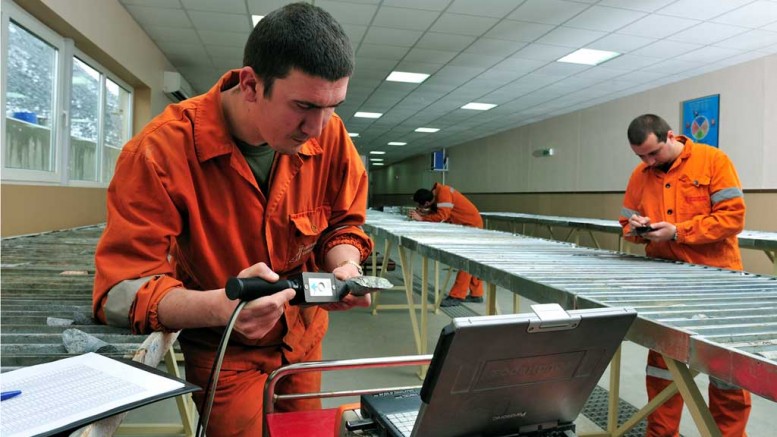It’s been a long road, with a few twists and turns, but Dundee Precious Metals (TSX: DPM) has finally received a construction permit to build an open-pit mine at its Krumovgrad gold-silver project in Bulgaria.
“This is the last one — there are no other permits that are part of the critical path for the project,” Rick Howes, Dundee’s president and CEO, tells The Northern Miner. “We have got lots of support now from the government and the local community, and as a foreign investor that’s sometimes hard to do.”
The company had submitted an earlier version of the project for approval but stopped the permitting process so that it could incorporate local preferences. In its redesign, for example, it took cyanide out of the process (“it has strong opposition in that part of the world, particularly in Eastern Europe”). It also replaced a planned wet tailings dam with a dry tailings facility, and lowered the project’s footprint from 145 hectares to 85 hectares. Dundee then resubmitted the project for permitting and received approval of its environmental impact assessment in early 2013.

Dundee Precious Metals’ Krumovgrad gold project, just south of the town of Krumovgrad in southeast Bulgaria. Credit: Dundee Precious Metals.
Construction should start in a month, subject to board approval, and the first concentrate should be produced sometime in the third quarter of 2018, with commercial production in early 2019.
Dundee expects the mine will produce an average 85,700 oz. gold and 38,700 oz. silver a year over an eight-year mine life at total cash costs of US$404 per equivalent oz. gold.
Capital costs could come in at US$178 million and the payback period, after-tax, is expected to be just shy of two and a half years.
Based on the company’s estimates and long-term metal prices of US$1,250 per oz. gold and US$15 per oz. silver, Krumovgrad’s after-tax internal rate of return could reach 24.8% and its after-tax net present value, at a 5% discount rate, is US$187.6 million. Annual earnings before interest, taxes, depreciation and amortization are anticipated to be US$66 million.
The company says that at current metal prices, the project can be funded from internally generated cash flow and supplemented with lines of credit under its revolving credit facility.
Krumovgrad’s Ada Tepe deposit is an epithermal gold-silver deposit in the Rhodope Mountains, a few kilometres south of the town of Krumovgrad and 320 km southeast of Bulgaria’s capital, Sofia.
Proven reserves stand at 2.6 million tonnes grading 5.39 grams gold per tonne for 0.45 million contained oz. gold and 2.82 grams silver for 0.24 million oz. silver. Probable reserves measure 3.6 million tonnes grading 3.08 grams gold for 0.36 million oz. gold and 1.79 grams silver for 0.21 million oz. silver.
Dundee says the mine concession area and surrounding exploration licences also offer significant upside.
Last year, it started diamond drilling to test near-surface and covered target areas near Ada Tepe. About 2 km east of Ada Tepe, for instance, at the Kupel North target area, one drill hole intersected 8 metres averaging 12.8 grams gold per tonne and 4.9 grams silver, at 277 metres deep. Additional drill holes at Kupel North and the first holes drilled 750 metres northeast of Ada Tepe, in the Chobanska target area, are part of an ongoing 3,750-metre drill program.
Dundee has been active in Bulgaria since 2003, when it acquired the past-producing Chelopech underground gold mine, about 70 km east of Sofia. Chelopech produces a copper concentrate containing gold and silver and a pyrite concentrate containing gold.
In 2015, the mine produced 195,000 contained oz. gold in all concentrates at all-in sustaining costs of US$620 per ounce. Next year Dundee says Chelopech will produce between 138,000 and 172,000 oz. gold.
In-mine exploration programs are replacing the reserves mined each year. “When we acquired Chelopech it had less reserves than it has now,” Howes says. “We have reserves for another 10 years. We’ve more than replaced the mined reserves over the last 12 or 13 years.”
Chelopech has been mined since the mid-1950s, initially as a state-run mine under the control of the Soviet Union. But it shut down during the break up of the USSR (1990–1991). When Dundee got involved, the mine changed.
“We saw the potential of that mine and that it wasn’t being taken advantage of, so we made major investments and quadrupled mine production, cut the cost in half and transformed it from a rather worn-down, beat-up old mine to a modern and efficient mine, with some of the latest technology.” (Chelopech was producing half a million tonnes a year when Dundee stepped in, and it now produces over 2 million tonnes a year.)
Dundee sends the sulphide-rich concentrates from Chelopech to its wholly owned Tsumeb smelter in Namibia, which treats complex copper concentrates. (Dundee bought Tsumeb in 2010 after it realized it would take too long to permit a treatment facility in Bulgaria.)
Initially the company was attracted to the East European country for its geological potential and reasonable tax environment. The corporate and personal income tax rates are just 10%.
Bulgaria also offers a two-year, value-added tax exemption for importing equipment for investment projects over €5 million, depreciation of two years for computers and new manufacturing equipment, research and development expense write offs, and a 5% withholding tax on dividends and liquidation quotas.
The country also has a history of mining (mineral exploration and mining were important under the communist regime and the country produced a range of metals, including copper, lead, zinc, gold and coal), and educational standards are high.
Bulgaria is also harmonizing its legal and regulatory environment with that of the European Union, which it joined in January 2007.
“The laws are pretty reasonable and are becoming more similar to the rest of the European Union,” Howes says. “We’ve gotten all our permits, and we’ve never had interruptions to our mine operations.”


Be the first to comment on "Dundee gets key permit for Krumovgrad"